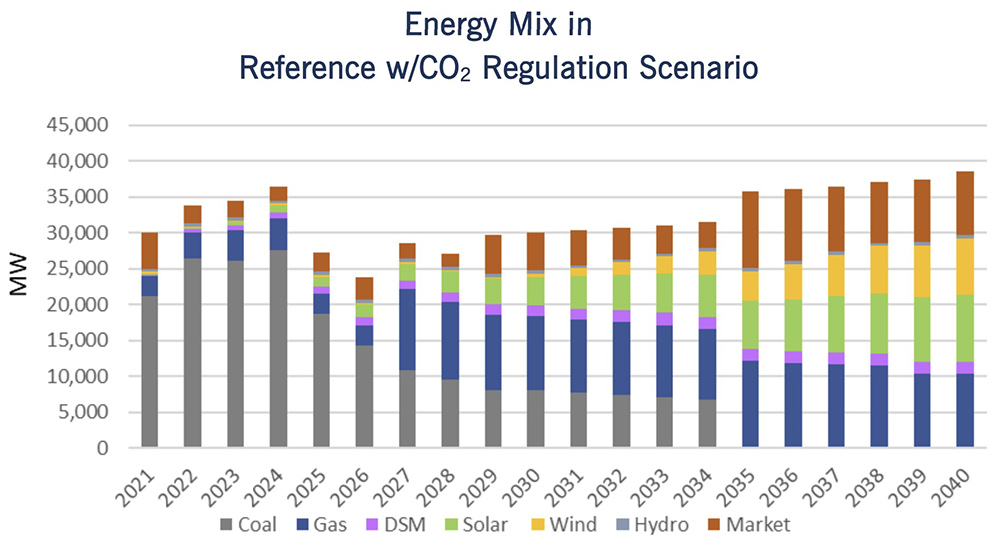NextEra Energy Transmission and the Southern Renewable Energy Association (SREA) have asked FERC to intervene in a last-ditch effort to save the only competitive transmission project ever approved for MISO South.
The two lodged separate protests after MISO filed at the commission in January to terminate its executed selected developer agreement with NextEra Energy Transmission (NEET) Midwest (NYSE:NEE) to construct the $115 million, 500-kV Hartburg-Sabine Junction project in East Texas (ER23-865).
The grid operator determined there wasn’t a need for the project last year, saying its benefits evaporated because of recent Entergy (NYSE:ETR) generation additions in the region. (See MISO Cancels Hartburg-Sabine Competitive Project.)
When Texas passed a right-of-first-refusal (ROFR) law for incumbent developers in 2019, a struggle percolated over whether NEET Midwest, MISO’s originally selected developer for the project, or Entergy Texas would build the line.
NEET told FERC in its filing that it is “optimistic” it can resume the project’s development following the 5th U.S. Circuit Court of Appeals ruling last year that the law discriminates against nonincumbents in the portions of Texas belonging to interstate transmission systems. Texas has since appealed the ruling to the Supreme Court. (See Texas Petitions SCOTUS to Review ROFR Ruling.)
The transmission developer told FERC that MISO’s cancellation of the project was premature. It said the grid operator “failed to appropriately weigh the full array of potential consequences of termination, like evaluating the true cost of canceling the [project] where it may more efficiently address identified system needs as compared to other projects proposed for inclusion” in MISO’s annual Transmission Expansion Plan (MTEP).
NEET pointed to the $1.1 billion, 150-mile, 500-kV line and substation project that Entergy Texas proposed for reliability purposes in MTEP 23. It implied that MISO is better suited to system planning than Entergy, which has sparked debate among stakeholders over whether the utility is attempting to dodge more efficient and regionally allocated transmission projects. (See Initial MTEP 23 Ignites Familiar Arguments over MISO South’s Reliability Spending.)
“Termination of the project at this time would leave real benefits on the table for customers in the MISO South region and potentially incentivize incumbent utilities in RTO/ISO regions to use litigation and other delay tactics as a method to undermine competitive transmission development in favor of potentially more expensive and less efficient solutions that are less likely to offer the same level of cost-containment mechanisms typically offered by developers through the competitive planning processes implemented by RTOs/ISOs,” NEET argued.
MISO approved Hartburg-Sabine as a market efficiency project under MTEP 17. The project was expected to alleviate congestion, ease import limitations and allow access to lower-cost generation for customers in the chronically congested West of the Atchafalaya Basin and western load pockets in Entergy’s MISO South footprint.
SREA accused Entergy of using “an anticompetitive strategy of capturing, delaying and/or canceling transmission projects with local generation assets at significant cost to local ratepayers, while at the same time not resolving underlying load pocket problems.”
The industry association maintained there still might be a need for Hartburg-Sabine because MISO performed only a “limited” benefits screen in its latest analysis of the line. It added that since 2017, the grid operator hasn’t performed a congestion analysis for MISO South, so the region could be in considerable need of prudent planning.
SREA lamented that Hartburg-Sabine has gone the way of the Waterford-Churchill economic project in Entergy Louisiana territory. The utility and MISO agreed to build the 230-kV project in 2016. Four years later, Entergy canceled the project after it built the nearby 950-MW St. Charles combined cycle gas turbine.
The association said Entergy is trying to resuscitate the Waterford-Churchill project in MTEP 23, rebranding it as a baseline reliability project rather than a competitively bid market efficiency project. Baseline reliability projects in the MISO footprint are proposed by transmission owners, not cost shared, and billed only to the local transmission zone in which they’re located.
“The cancellation of Hartburg-to-Sabine at this particular moment without a deeper analysis of the project could simply extend an ongoing trend in inefficient planning,” SREA told FERC.
Entergy filed in support of MISO’s decision to terminate, saying that Hartburg-Sabine “will not provide any meaningful adjusted production cost benefits, that terminating the project will not adversely affect reliability and that continuing to include the project in transmission models could distort transmission planning processes and potentially harm stakeholders.”
The utility also disputed that its proposed reliability project in MTEP 23 shares characteristics with Hartburg-Sabine. In an emailed statement to RTO Insider, Entergy spokesman Neal Kirby said the company will address the allegation in an upcoming FERC filing.
Kirby said the two projects are “completely different in location, scope and scale, and address different needs.”
“The MTEP 23 project travels from near the Texas border deep into the western region and allows increased imports of power to mitigate against risks during high load conditions or if generators in the western region are unavailable,” he said. “By contrast, the Hartburg-Sabine project travels a short distance entirely within the eastern portion of Entergy Texas’ service area and provides few if any of the benefits of the MTEP 23 project. In fact, as MISO’s analysis shows, it provides no meaningful benefits, let alone benefits exceeding costs.”
